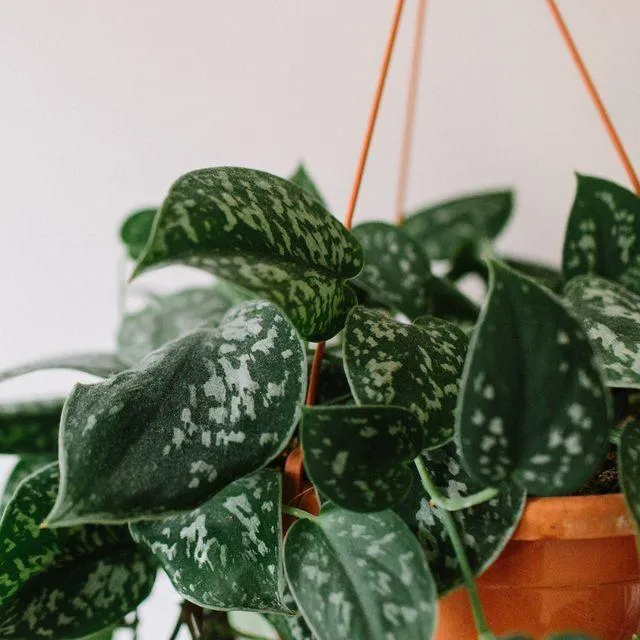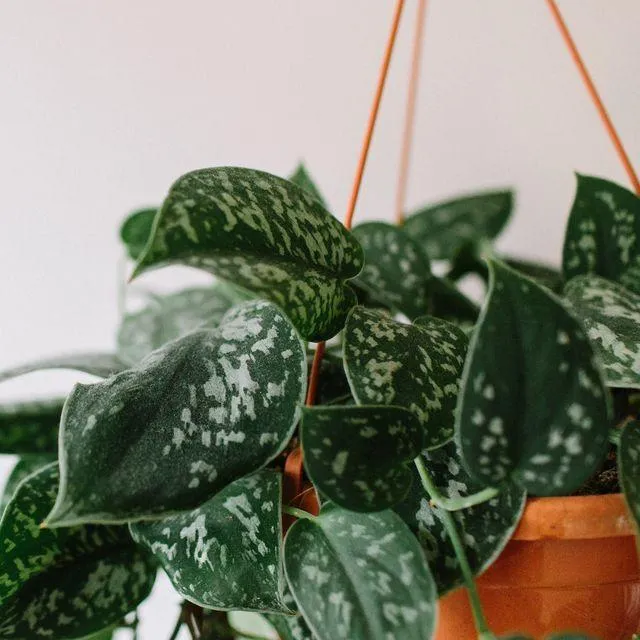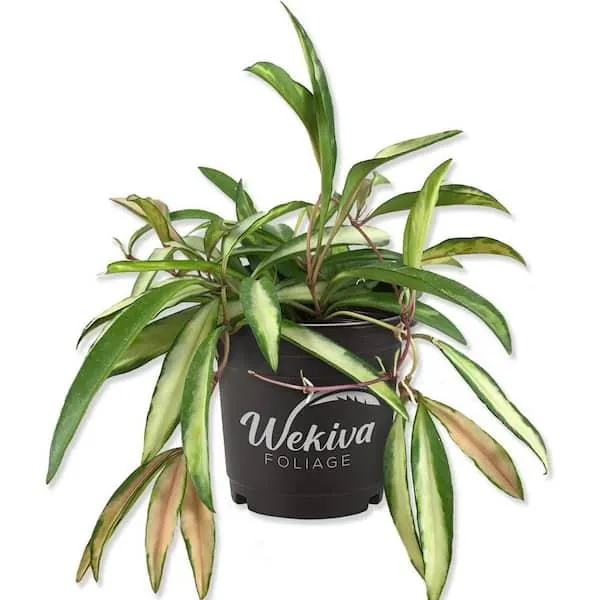Everything You Need to Know About Cascading Green Plants
What are cascading plants?
Cascading plants, sometimes called “trailing” or “hanging” plants, are any type of foliage plant that grows in a hanging or vines manner (i.e. it trails downward from its container). They get their name from the way they cascade over the edges of planters, baskets, or other containers. Some common indoor cascading plants include English ivy, pothos,Swedish ivy,wax begonia, and spider plants.
Benefits of cascading plants
- They add visual depth and dimension to tabletops, shelves, and other high places by spilling over the edges vertically.
- Many are super low maintenance since they thrive in low to medium light and don’t need much watering.
- Their drooping leaves provide a relaxing, nature-inspired element to any indoor space.
- Cascading plants help soften hard architectural lines and bring a sense of liveliness indoors.
Best types of cascading plants for different conditions
From my experience as an indoor plant enthusiast, here are some top cascading plant varieties that thrive in various light and care levels:
Low light:
- Pothos – One of the hardiest, fastest growing trailing plants. Can survive with very little light.
- Spider plant – Produces cute miniature plantlets on long stems. Extremely low-maintenance.
- Wandering Jew – Comes in various colorful foliage shades. Thrives in low indirect sunlight.
Medium light:
- English ivy – Classic cascading plant with small green or variegated leaves. Needs some light each day.
- Swedish ivy – Similar to English ivy but with cream and green variegated foliage. A faster grower.
- Tradescantia – Comes in purple, pink, white shades.Prefers some direct sunshine each day.
Bright light:
- Purple waffle plant – Striking purple crinkly leaves. Loves lots of sunlight.
- Heartleaf philodendron – Deep green heart-shaped leaves. Thrives in indirect sunlight or shade.
- String of hearts – Cute thread-like stems with round green leaves. Needs bright light to maintain color.
Tips for care and maintenance
While cascading plants are low-effort overall, here are some tips I’ve learned to keep them thriving:

- Water when the top 1-2 inches of soil are dry. Don’t let them sit in soggy soil.
- Mist leaves regularly to increase humidity around the plant.
- Fertilize monthly during growing season with a balanced liquid plant food.
- Prune leggy vines or stems to encourage bushier new growth.
- Repot in spring if roots are filling the container.
- Rotate pots weekly so all sides receive even light exposure.
- Snip off any yellow or brown foliage to maintain an attractive appearance.
Display ideas for cascading plants
Get creative with containers and placements to show off your trailing greenery:
- Hang pots from ceiling hooks, shelves, or stair railings.
- Place in tall urns, baskets, or brushed steel hanging planters.
- Trailing over the edges of bookshelves, mantels, or built-in nook shelves looks stunning.
- Line the top of a picture ledge or stairs with a row of small hanging pots.
- Allow long vines to flow down the sides of an open bookcase filled with books and trinkets.
- Layer in tiered concrete or resin desktop planters.
I once knew a friend with mad plant styling skills who would fill empty water bottles with soil and poke holes in the bottom for drainage. She’d plant tiny cuttings inside and hang them on her screened porch with fishing line – it looked totally calming and beachy!
So in summary, whether you want minimal effort greenery or a bold dramatic statement, cascading plants are basically foolproof to add verdant beauty indoors. With the right variety, care, and display idea, your crawling foliage will look seriously lush! Let me know if you have any other plant questions – I’m always happy to help other plant peeps.

Final thoughts
Cascading plants can seriously elevate your home’s aesthetic in a major way. Sure, string of pearls or heartleaf philo aren’t as eye-catching as showier blooming plants. But the whole hanging/trailing vibe gives such zen vibes, ya know? It pretty much calms my whole soul just looking at them. Not to mention, their low maintenance tendencies make them perfect for lazy plant parents like myself, hehe. So in short – if you’re on the hunt for some understated greenery to accessorize your space, cascading foliage is a total no-brainer choice. The vibes will be off the charts, my friend!
Important Considerations For Cascading Green Plants
| Type of Plant | Light Needs | Water Needs | Care Level |
|---|---|---|---|
| Pothos | Low to Medium | Allow soil to dry out between waterings | Low |
| Philodendron | Medium | Water when top inch of soil is dry | Low |
| Spider Plant | Medium to Bright | Let soil partly dry between waterings | Low |
| Swedish Ivy | Bright, indirect light | Water when top inch of soil is dry | Low |
| English Ivy | Medium to Bright | Water when top inch of soil is dry | Low |
FAQ
-
What kind of plants can be used for cascading gardens?
Plants like ivy, creeping fig,and english ivy are commonly used basically. They will grow along walls and spread across surfaces. Spider plants with their little plantlets can look good kinda hanging down too.
-
How do I care for cascading plants?
Cascading plants need very little maintenance really. Make sure they get plenty of sun and keep the soil moist, although not soaking wet. You may have to pull off dead leaves sometimes, but otherwise they can care for themselves sorta. Just let them hang down and spread out.

-
Will cascading plants damage walls or surfaces?
Most cascading plants are safe for walls, despite what some people think. As long as you use houseplants and not invasive vines, they shouldn’t cause harm. The roots need soil to grow in and won’t damage concrete or wood necessarily. Hopefully they won’t chip your paint, but you never know I guess!
-
How long until a cascading plant fills a planter?
It depends on the plant, but many will spread quite quickly if conditions are right. Expect them to start spilling over the edges within a few months. Some experts say English ivy can blanket a large area in just one season, while other plants may take a year or more. Surprisingly fast growth is common though according to experts!
-
Can cascading plants be trimmed or shaped?
You definitely can trim cascading plants to keep them looking neat. Cut off straggly bits or thin them out when they get too thick. Amazingly it often encourages even more growth. You can train them to hang a certain way by guiding the vines with wire or stakes too. Overall they’re pretty low maintenance but a little pruning now and then doesn’t hurt.

-
Are some cascading plants more colorful than others?
While ivy is always green, you got options for more colorful cascading plants. Wandering Jew with its neat trailing leaves comes in pinks, reds, and purples. Same for hypoestes, also called polka dot plant. Sweet potato vine has lovely chartreuse or purple foliage. So in summary, yes you can get cascading plants in an array of beautiful colors if a solid green walls not your thing.
-
What type of pots or containers work well?
Any pot will work if it has drainage holes on the bottom. Hanging baskets are an obvious choice for their intended purpose. Window boxes could make an awesome cascading garden too with the plants spilling over the sides. You could even tie them to a trellis or let them flow from elevated planters or over a retaining wall border. Cascading plants are flexible like that really.
